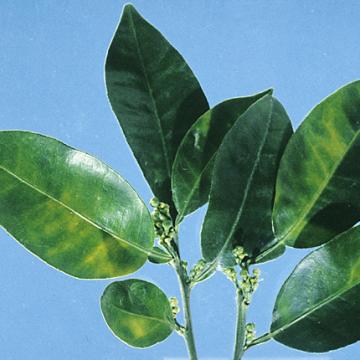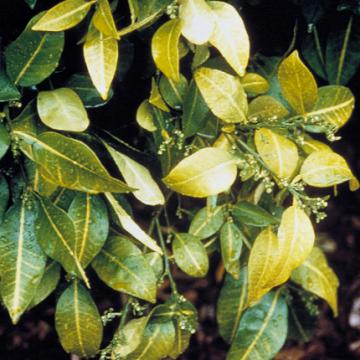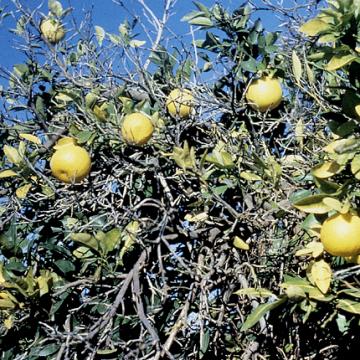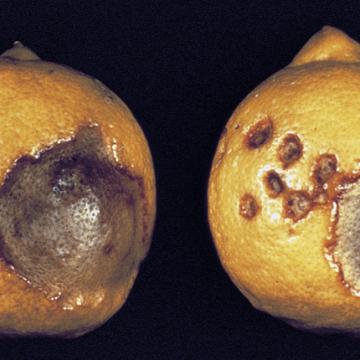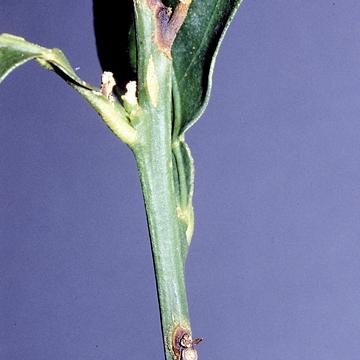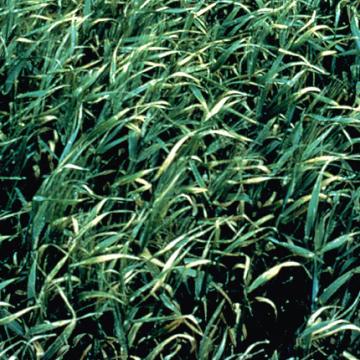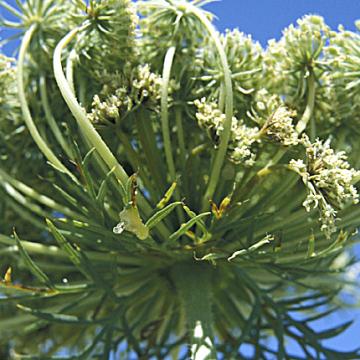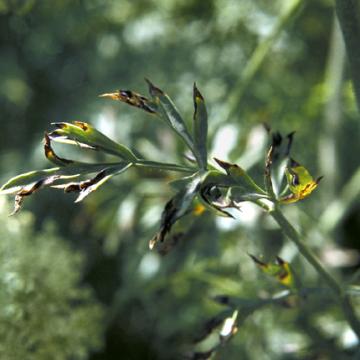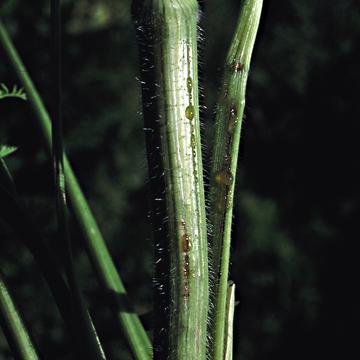DISEASE: Australian citrus dieback
HOST: Citrus (Grapefruit)
Leaves with mottled chlorosis.
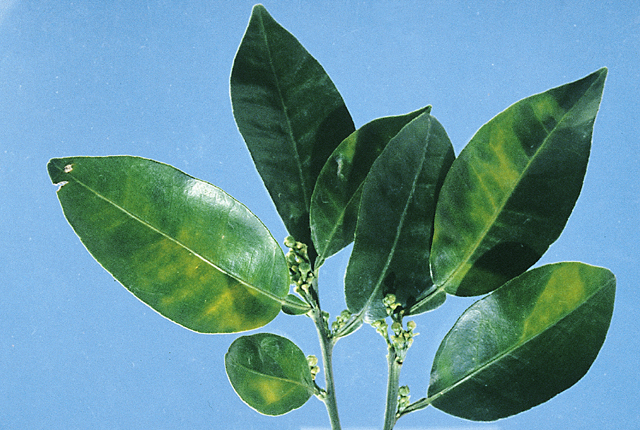
Australian citrus dieback | Citrus (Grapefruit)
DISEASE: Australian citrus dieback
HOST: Citrus (Grapefruit) (Citrus paradisi)
PATHOGEN: 'Candidatus Phytoplasma' sp.
PATHOGEN SYNONYM: Phytoplasma (undefined)
SOURCE: P. Broadbent
DISEASE: Australian citrus dieback
HOST: Citrus (Grapefruit)
Late stage of disease. Note yellowing of leaf veins and entire leaves.
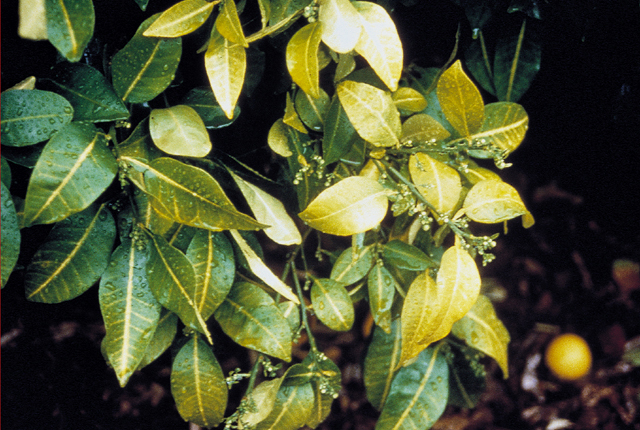
Australian citrus dieback | Citrus (Grapefruit)
DISEASE: Australian citrus dieback
HOST: Citrus (Grapefruit) (Citrus paradisi)
PATHOGEN: 'Candidatus Phytoplasma' sp.
PATHOGEN SYNONYM: Phytoplasma (undefined)
SOURCE: P. Broadbent
DISEASE: Australian citrus dieback
HOST: Citrus (Lime)
Severe decline, a late stage of disease. The disease spreads slowly in mature trees, progressing faster in young trees.
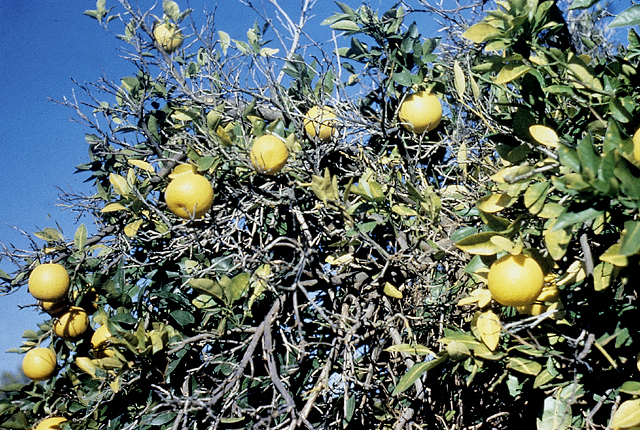
Australian citrus dieback | Citrus (Lime)
DISEASE: Australian citrus dieback
HOST: Citrus (Lime) (Citrus sp.)
PATHOGEN: 'Candidatus Phytoplasma australiense'
PATHOGEN SYNONYM: Phytoplasma Stolbur group
SOURCE: P. Broadbent
DISEASE: Bacterial blast and black pit
HOST: Citrus (Lemon)
The term "black pit" refers to black lesions on fruit, which may be specks or large, sunken pits as seen here. They also may be light tan, later becoming reddish brown to black.
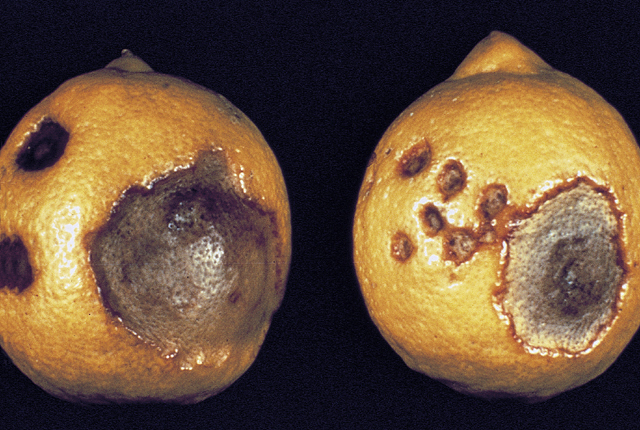
Bacterial blast and black pit | Citrus (Lemon)
DISEASE: Bacterial blast and black pit
HOST: Citrus (Lemon) (Citrus limon)
PATHOGEN: Pseudomonas syringae pv. syringae
SOURCE: J. Menge
DISEASE: Bacterial blast and black pit
HOST: Citrus (Lime)
Characteristic symptoms of brownish black lesions on twigs and leaves (blast), starting with infection of petioles. Black pit refers to brown to black sunken spots on fruit, 5 to 20 mm in diameter.
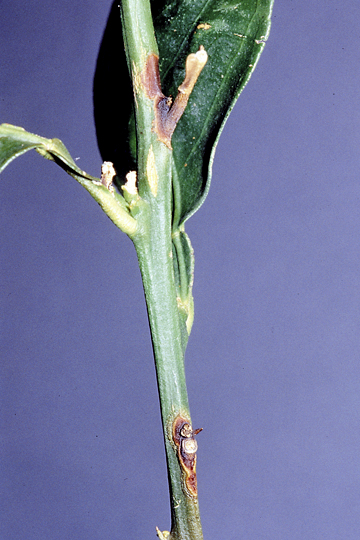
Bacterial blast and black pit | Citrus (Lime)
DISEASE: Bacterial blast and black pit
HOST: Citrus (Lime) (Citrus sp.)
PATHOGEN: Pseudomonas syringae pv. syringae
SOURCE: P. Broadbent
DISEASE: Bacterial leaf blight
HOST: Barley
Diseased barley plants with typical bleaching of flag leaves. Initial symptoms are water-soaked lesions that later coalesce. Eventually, the entire leaf becomes necrotic and edges roll inward.
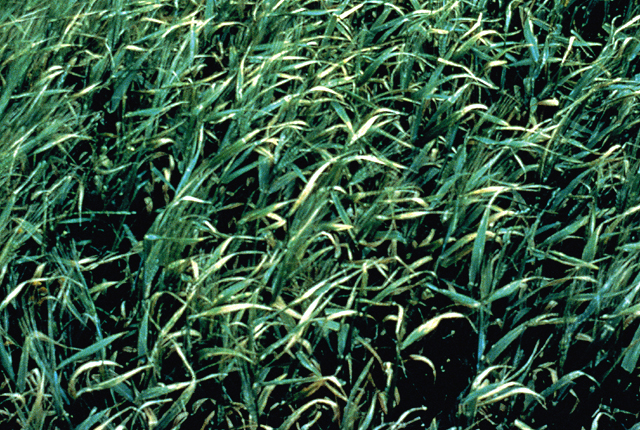
Bacterial leaf blight | Barley
DISEASE: Bacterial leaf blight
HOST: Barley (Hordeum vulgare)
PATHOGEN: Pseudomonas syringae pv. syringae
SOURCE: D. Sands
DISEASE: Bacterial leaf blight
HOST: Carrot
Blight of flower parts.
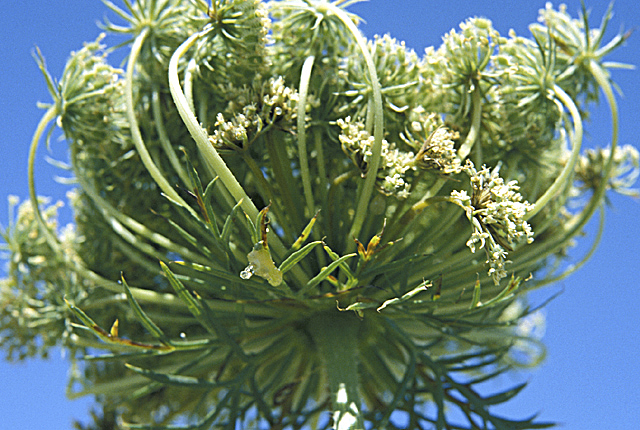
Bacterial leaf blight | Carrot
DISEASE: Bacterial leaf blight
HOST: Carrot (Daucus carota)
PATHOGEN: Xanthomonas hortorum pv. carotae
PATHOGEN SYNONYM: Xanthomonas campestris pv. carotae
SOURCE: N. Schaad
DISEASE: Bacterial leaf blight
HOST: Carrot
Leaf lesions begin as water-soaked spots that progress to small, yellow, angular spots and later expand to necrotic lesions with yellow halos.
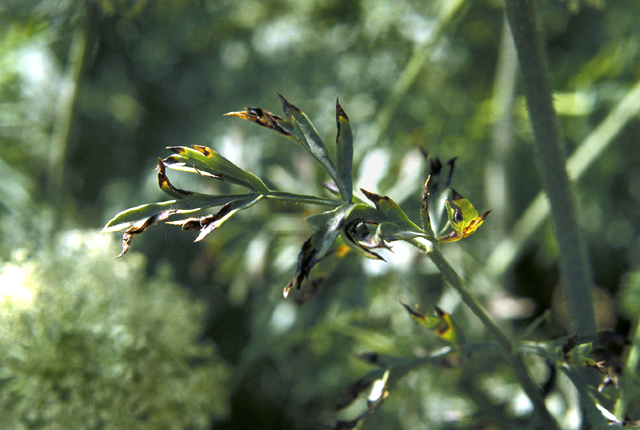
Bacterial leaf blight | Carrot
DISEASE: Bacterial leaf blight
HOST: Carrot (Daucus carota)
PATHOGEN: Xanthomonas hortorum pv. carotae
PATHOGEN SYNONYM: Xanthomonas campestris pv. carotae
SOURCE: N. Schaad
DISEASE: Bacterial leaf blight
HOST: Carrot
Bacterial ooze on flower stalk from systemic invasion of the pathogen.
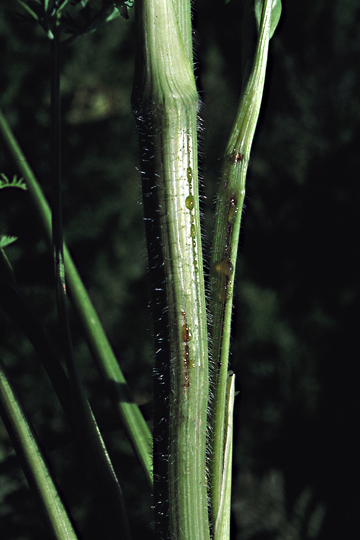
Bacterial leaf blight | Carrot
DISEASE: Bacterial leaf blight
HOST: Carrot (Daucus carota)
PATHOGEN: Xanthomonas hortorum pv. carotae
PATHOGEN SYNONYM: Xanthomonas campestris pv. carotae
SOURCE: APS


